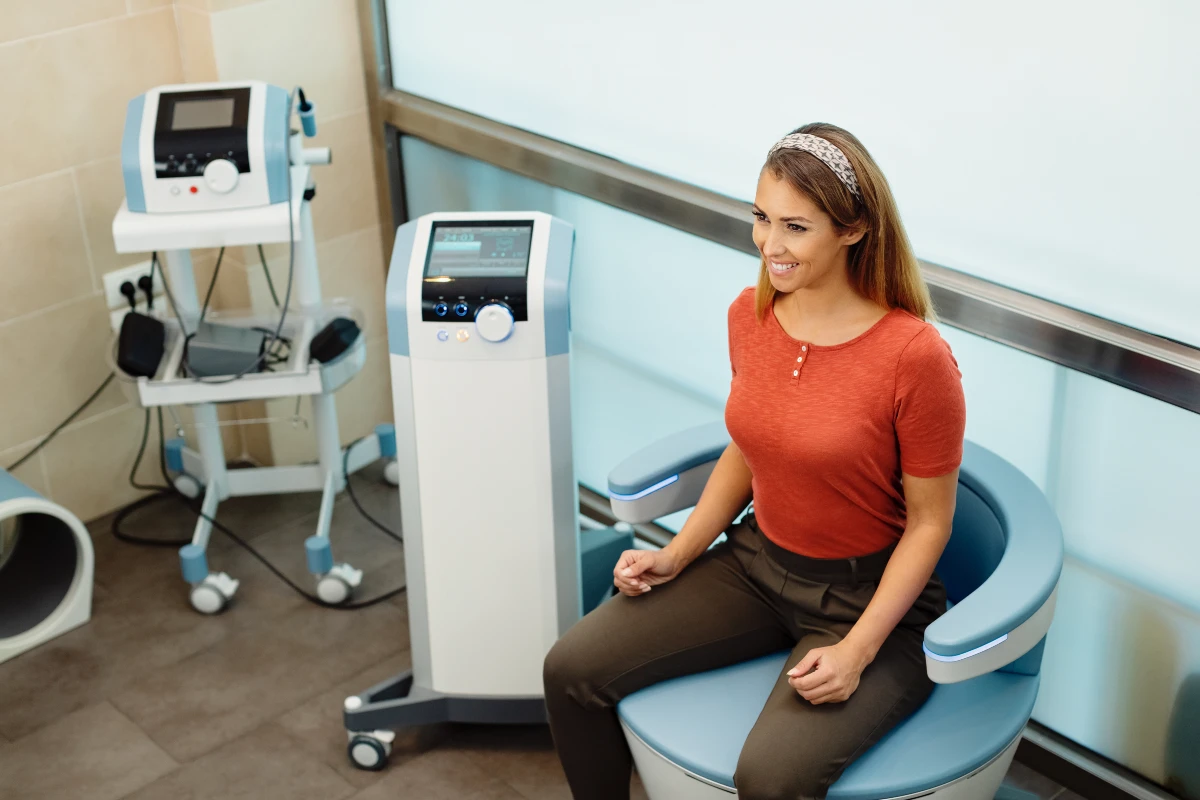Choosing the Right Urinary Incontinence Treatment for You
Managing urinary incontinence is essential, especially given that a lack of treatment could mean that bladder control problems become progressively worse and can start to impact your quality of life, self-esteem, and confidence in engaging in social activities.
It’s also common for some people to discover certain treatments more effective than others, where stress incontinence, for example, might be closely related to anxiety levels, whereas others benefit from pelvic floor exercises to strengthen their pelvic floor after childbirth.
We’ve summarised some of the routes you may wish to explore to provide an overview of all the options, including those offered by the NHS and more innovative private treatments.
Lifestyle Changes That May Help With Urinary Incontinence
GPs often recommend lifestyle changes where there is a strong likelihood that this will help with symptom improvement or reduce the severity of your urinary incontinence. This can include recommendations to:
- Reduce your intake of caffeine, including in fizzy drinks.
- Recording and adjusting the amount of fluid you’re drinking – which applies as much to not drinking enough to try and avoid accidents as it does to over-hydration.
- Weight loss management.
It’s also common to be advised to practice pelvic floor muscle exercises, with damaged, weakened muscles being a primary cause. Kegels work by squeezing your muscles, usually aiming for a minimum number of muscle contractions every day for at least three months.
The issue with manual pelvic floor exercises is that they can take time to start having any impact, and some people cannot contract these muscle groups. An alternative is to use electrical stimulation, although the NHS procedure is invasive and involves an internal probe, which many people find uncomfortable and unpleasant.
Incontinence Products and Bladder Training
Urge incontinence can sometimes be improved with bladder training combined with pelvic floor exercises. The theory is based on gradually increasing the amount of time between when you initially feel the need to use the bathroom and urinating, with courses that last for six weeks or more.
There are also incontinence products, although these don’t treat the condition but can be recommended to help manage the symptoms. Examples include absorbent pads, catheters that drain urine, and devices that stop urine from leaking during exercise.
Medications Prescribed for Urinary Incontinence
Prescription medications can be offered for urinary incontinence, usually when other treatments haven’t worked, and for those who wish to avoid surgery. Like any medicine, there are side effects to consider, and most GPs will expect you to return for assessments after two to four weeks to check whether the medicine is having the desired impact.
While the exact medication prescribed might depend on the severity of your symptoms, the amount of time you’ve had urinary incontinence, and the causes of the condition, they can include:
- Oxybutynin, tolterodine, and darifenacin: the most commonly prescribed medicines for urge incontinence. These are anticholinergics that help treat an overactive bladder. Side effects can include blurred vision, fatigue, constipation, and a dry mouth.
- Duloxetine is a type of antidepressant that also keeps the urethra closed and is, therefore, used to reduce urinary incontinence. The side effects are similar to those above but include nausea. It is important never to suddenly stop taking this medicine, as a gradual withdrawal is necessary to avoid side effects.
- Vibegron and mirabegron are sometimes prescribed if other medications haven’t worked – they prompt the bladder muscles to relax, encouraging it to fill and store urine, but can cause constipation, nausea, diarrhoea and constipation.
If you suffer from nocturia, where you need to use the bathroom frequently during the night, you may be offered another alternative called desmopressin, sometimes alongside a loop diuretic in the afternoon to empty the bladder – while noting that the latter is sometimes unlicenced.
Surgical Interventions Available to Treat or Manage Urinary Incontinence
Several potential surgeries are provided through the NHS to treat urinary incontinence, but not everybody may be eligible, and it is worth enquiring about waiting times or the criteria to be referred for the surgery.
It’s also strongly advisable to seek guidance about aftercare recovery times and the success rates of the surgery since undergoing an operation is a big decision and not suitable for everyone.
- Colposuspension surgery involves lifting the top of the bladder, with an incision made through the abdomen, aiming to stop involuntary leaking due to stress incontinence. This operation can be a keyhole surgery or an open surgery.
- The sling procedure is also performed through the abdomen and vagina, with a sling inserted around the top of the bladder to prevent leakage and offer support. These slings can be created from your own donor tissue, synthesised slings or animal tissue.
If you cannot or do not want to have surgery, you might be able to access a less invasive procedure where substances called urethral bulking agents are injected into the urethra walls, enlarging them and helping the urethra to stay closed.
The caveat is that although the process doesn’t involve stitches or a long recovery, this option isn’t considered the most effective, and many people need repeat injections performed.
Non-Invasive, Non-Surgical Private Urinary Incontinence Treatments
We often refer to the EmSella Chair as groundbreaking because it is a true innovation in urinary incontinence treatment. It has no side effects, is proven to be effective, and doesn’t require any invasive examinations, procedures, or surgeries—in fact, the therapy is completed while you remain fully clothed.
As an increasingly high-demand alternative to medications, operations, and self-care solutions, the EmSella Chair stimulates the contractions that happen when you perform Kegel exercises using electromagnetic frequencies equivalent to 11,000 contractions in one 30-minute session.
This forward-thinking approach is suited to men and women, is FDA-approved, and can be used for a wide range of symptoms and conditions. It restores control over the pelvic floor muscles and delivers fast, ongoing results with follow-up sessions.
If you’re considering surgery, have had limited or no success with medications, or have been struggling to make lifestyle changes to see any improvement in urinary incontinence through bladder training, we’d recommend you get in touch to schedule an initial consultation with the Chichester Chiropractic Health Centre or learn more about the powerful advantages of the EmSella Chair through our online knowledge guides.
Important Information for Current EmSella Chair Clients
Our valued clients who have already experienced the remarkable outcomes of the EmSella Chair treatment will be more than aware of how beneficial their sessions are in tackling pelvic floor dysfunctions.
Chichester Chiropractic Health Centre was delighted to be a leader in introducing the treatment, one of the first outside of London, and to have maintained competitive pricing ever since.
From 1st May 2025, we have taken the decision to review and update our treatment pricing, reflecting the increasing interest in this innovative approach, with revised costs of £120 per treatment and £99 for three-monthly maintenance appointments, with generous reductions for those booking packages of six or 12 sessions.
Existing clients with monthly plans or prepaid EmSella Chair sessions are requested to contact Amelia or to discuss their treatment during their next review.


